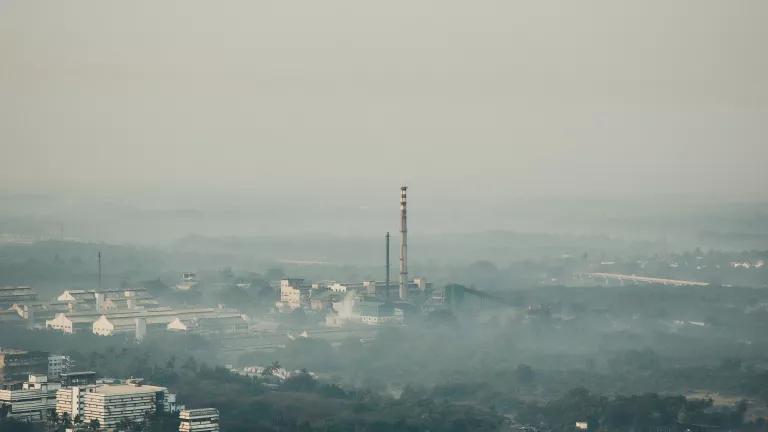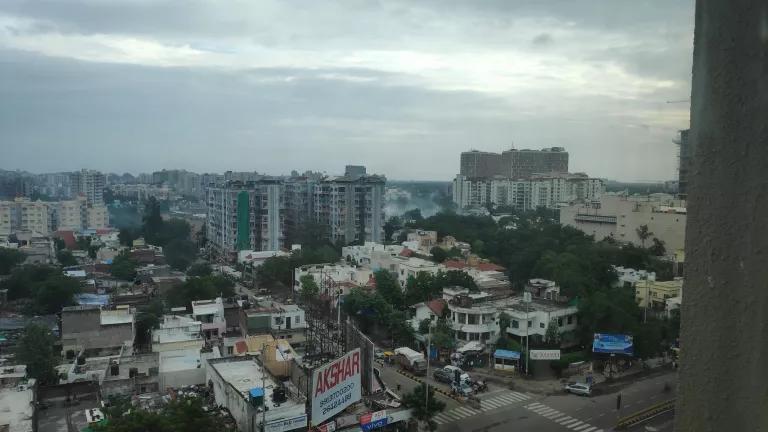Coordinating Actions to Counter India’s Air Pollution Crisis
Air pollution harms India’s people, slows its economy, and imperils its future.

Air pollution remains a problem across India, not just in Delhi and the National Capital Region.
Blog co-authored by Polash Mukerjee
India continues to suffer from some of the worst air pollution levels in the world and reducing its heavy toll is critical for securing country’s long-term health and prosperity. According to Indian scientist, outdoor air pollution, largely a byproduct of burning fossil fuels (coal, oil, and gas), was responsible for nearly one million early deaths across the country in 2019. Beyond that staggering health burden, dirty air hampers India’s emerging economy, and air pollution contributes to ecosystem degradation, worsens agriculture and crop yields, and impairs visibility. As the 27th Conference of the Parties to the United Nations Framework Convention on Climate Change (COP27) opens, coordinated leadership is needed to cut climate-warming emissions and dangerous air pollution worldwide; action in India is especially urgent for vulnerable populations, including informal workers, women, children, people with chronic comorbidities, and the elderly.
Air Pollution Spikes During Diwali Celebrations
Last month, India celebrated the festival of Diwali, and late fall is when air pollution typically spikes to hazardous levels in the north, due a convergence of natural and human factors. In terms of weather conditions, lower air temperatures and stagnant air masses can facilitate the accumulation of pollutants in the lower atmosphere. Burning of crop waste in northern Indian states can worsen air quality far downwind. During this time, a thick haze over cities in the Indo-Gangetic Plain (IGP), which extends from Punjab in the northwest to Kolkata in the east. The situation is similar in many other cities across India, which typically see peaks in outdoor air pollution levels during winter months.
In the past, the Central Pollution Control Board, India’s government agency charged with pollution management, has analyzed the increase in pollution loads on Diwali day. That work has detected sharp increases in almost all air pollutants, notably hazardous particulate matter, as well as other dangerous pollutants linked to health harms, including sulfur dioxide and nitrogen dioxide. The use of fireworks for Diwali celebrations, which can spew toxic heavy metals like lead, nickel, and arsenic in to the air, is regulated, but enforcement is uneven.
This year, air quality in the IGP region was relatively better in the lead-up to the winter season, due to heavier than usual rainfall as well as better enforcement of long-term controls on air pollution sources. And while air quality still deteriorated to a “very poor” status during Diwali this year, pollution levels remained the lowest in 7 years, because more favorable weather conditions aligned with earlier festival observance. Nevertheless, poor air quality conditions are lingering.
Achieving India’s National Clean Air Programme Goals
In 2019, the Indian government launched its National Clean Air Programme (NCAP) to improve air quality in 132 cities where air pollution exceeds national limits. This fall, it strengthened its key NCAP goal to reduce dangerous fine particulate matter in the country’s most polluted cities—from a 20-30% reduction by 2024 to a 40% reduction by 2026 (both goals relative to 2017 pollution levels). Implementation challenges (limited human and technical capacity to develop, implement, and track air quality interventions) continue to hamper progress towards achievement of these goals, although some cities have fared better than others.
The complex challenge of cleaning up India’s air in accordance with NCAP requires sustained, targeted, and inclusive collaboration amongst stakeholders spanning government, civil society, and the private sector. NRDC and partners have been collaborating on air quality efforts in partner cities in India since 2017. These projects span improved air quality monitoring, health risk communication, stakeholder dialogues, and applied research on the air quality and health benefits of climate change actions at the city level. This year, NRDC partnered with the Mahila Housing Trust (MHT) and Purpose to highlight the adverse impacts of air pollution on one of the most affected groups in Delhi, female construction workers.

Pollution from a coal-fired power plant in Gujarat, India
For the third United Nations International Day of Clean Air for Blue Skies observed in September, NRDC collaborated with iFOREST, the United Nations Environment Program (UNEP) and the World Bank to co-organized a roundtable discussion on Strengthening Capacities for Air Quality Management in India. The event convened leaders from the national government, states, cities, research institutions and civil society experts for a dialogue on ways to build human and technical capacity and advance an inclusive air quality management agenda. The discussion included sessions on strengthening workforce capacity for implementation and research on air quality management, as well as ways to increase financing available for interventions to address pollution at its many sources, from transit to the power sector.
Clearing India’s Air
Achieving a cleaner and healthier air quality future in India requires sustained effort, adequate human and technical resources, and evidence-based decision-making to address the biggest contributors the problem. As high pollution levels continue to harm India’s people, slow its economy, and imperil its future, the need for strong action could not be clearer.




